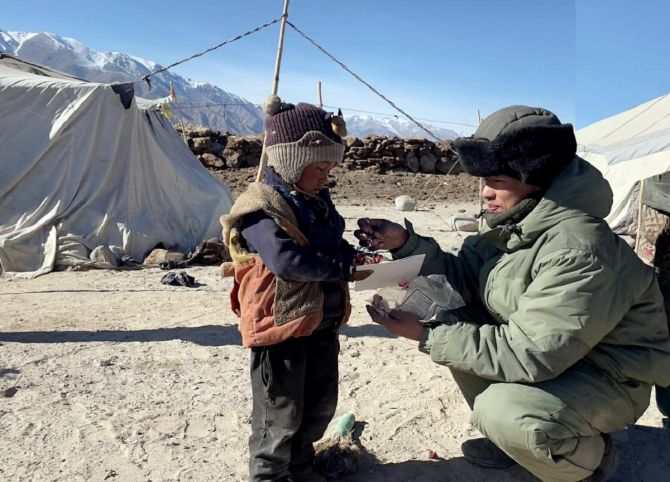China has a strong economic and strategic need in the Ladakh sector, which is why it is aggressively building its army to dominate the unfenced locations on the Indian side to lay claim on more areas, according to an official paper circulated at a high-level meeting.

The paper, prepared by Indian Police Service officers and submitted at the DGPs/IGPs meet held last week, said the country's border defence strategy should be given a new meaning and purpose with an economic incentive for the future, given India's limitation to be a part of the One Belt One Road or the China-Pakistan Economic Corridor project.
The paper suggests the strategy needs to be area-specific eg, border tourism can be promoted aggressively in the Turtuk or Siachen sector, and Daulat Beg Oldi or Depsang plains.
On the the Karakoram pass in the DBO, the paper said it is an ancient connection to India's silk route history, and opening the area to domestic tourists shall counter the remoteness of the idea.
It suggested that expeditions on the pass which were famous since the 1930s can be restarted and trekking and hiking areas be opened in a limited manner.
China has a strong economic and strategic need in the eastern border sector and they are aggressively building up their army to dominate the unfenced areas marked by the patrolling points on the Indian side to lay their claim on the area for further domination, the paper noted.
Apart from Prime Minister Narendra Modi, the three-day annual conference was attended also by Union Home Minister Amit Shah, national security adviser Ajit Doval and about 350 top police officers of the country.
An officer posted in Ladakh noted in the paper that during an interaction a senior security personnel, whose unit is based right on the forward area, told him it's worth it if India can buy peace with China's PLA for four years by retreating 400 metres.
This came amidst reports that out of 65 patrolling points, the presence of Indian Security Forces is lost in 26 PPs due to restrictive or no patrolling by the ISFs.
The OBOR project of China has given a greater purpose to the PLA to build road and military infrastructure in the eastern sector that shall also aid the CPEC project connecting the Chinese producers to the Central Asian market and Gwadar port in Pakistan, the paper noted.
Other than the reason that Ladakh is a strategic area for India with a historic connection, the monetisation potential of the region is missing in the country's purpose and so the constant loss of area since 1962 in the form of buffer zones being contested by the adversary keeps the security forces on the backfoot, it said.
The paper noted that for inviting a large number of tourists, nomadic festivals at all India level should be celebrated at Ladakh's Demchok, Koyul, Dungti, Kakjung villages which are located on the banks of Indus river and very close to the Line of Actual Control.
According to the paper, the Chota Kailash at Demchok can be opened to tourists to pay obeisance and prayers for the mount Kailash and promote religious tourism for the devout Hindus who cannot go to Mansarovar yatras.
The Mount is under surveillance by PLA's cameras and the access to the top is highly restricted by the army.
The documents said the civilian population near the border are the country's assets and their interests in terms of reclaiming lost pasture lands should be protected.
Manual patrolling in the areas at regular periods needs to be replaced by more sophisticated technologies like camera surveillance and comprehensive integrated border management system, the paper said.
"The surveillance systems need to be tested for harsh weather conditions, strong power and storage backup at subzero temperatures. Premier research institutes like IISc, IITs, post graduate and Phd students can be funded with research by the government to find solutions on the suitable material for sub-zero climatic conditions that can be used in surveillance mechanisms," it suggested.
Patents can be an incentive to promote the research on finding suitable dwelling solutions for Jawans, winter uniform and surveillance, it said.
"Needless to say, this shall cost a lot to the government exchequer and so a monetisation plan of border tourism is required to support the expense, even if it's a small start, it shall serve a purpose," the paper said.












 © 2025
© 2025